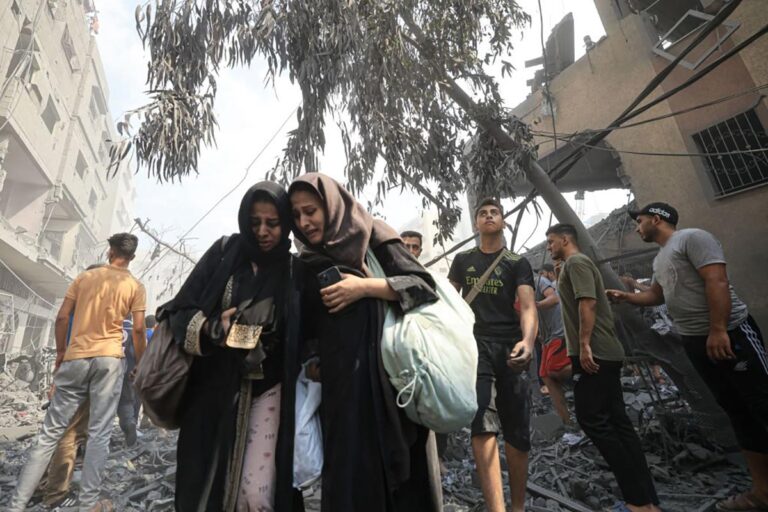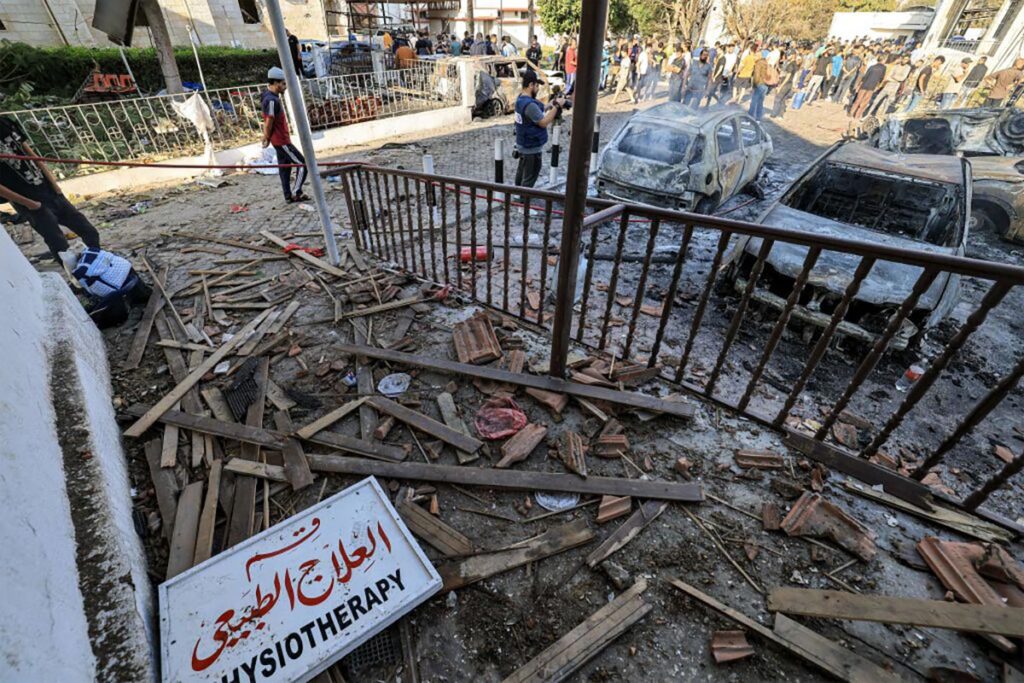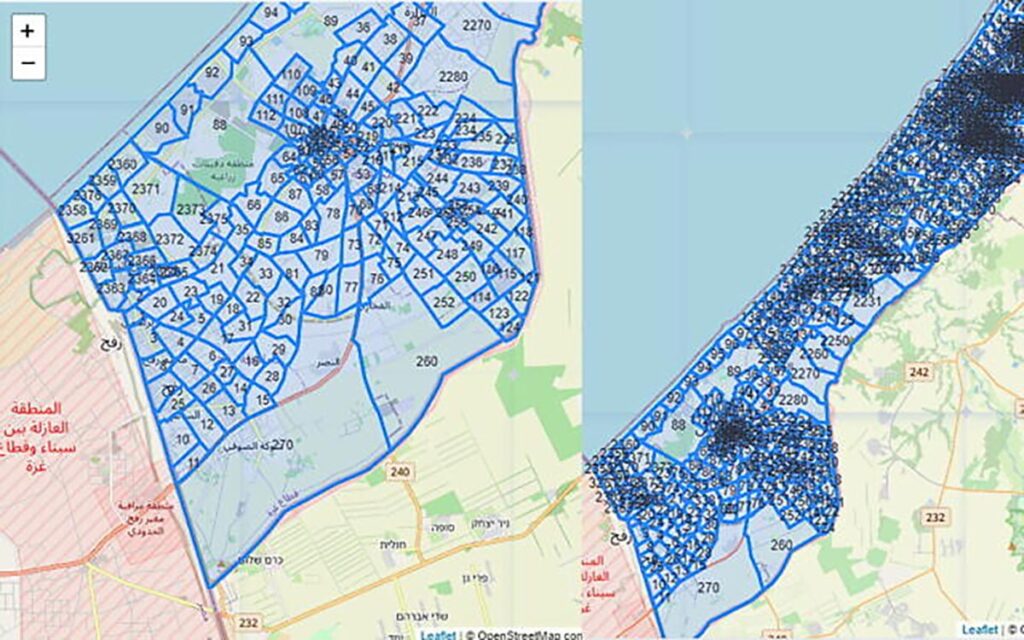
As the war between Israel and Hamas continues, world leaders are placing growing pressure on Israel to take further action to reduce civilian deaths in the conflict.
“We want to see the civilian death toll lower than it has been…lower than it has been the past few days,” U.S. State Department spokesman Matthew Miller said in a press briefing earlier this month. “Too many Palestinian civilians have died in this conflict.”
Similarly, U.S. Secretary of Defense Lloyd Austin stated, “In this kind of a fight, the center of gravity is the civilian population. And if you drive them into the arms of the enemy, you replace a tactical victory with a strategic defeat.”
US Defense Secretary Lloyd Austin delivered some of his strongest remarks over Israel's need to protect civilians in Gaza, calling them the center of gravity in the war with Hamas and warning of the risks of their radicalization https://t.co/b49HqUdUcs pic.twitter.com/Te5Z5gprZo
— Reuters (@Reuters) December 3, 2023
With reports of the growing death toll in Gaza, many are questioning whether Israel is doing enough to protect Palestinian civilians.
While the death toll reports are alarming, it’s critical to understand the particular challenges of fighting against Hamas and the measures Israel is taking to minimize civilian casualties.
Here’s everything we know about the situation.
Read more: Is Israel occupying the West Bank and Gaza Strip?
How many people have died in Gaza in the war?
As of Monday, the Hamas-run health ministry in Gaza reported that a little less than 18,000 people in total had been killed in Gaza since the conflict began.
While concerns have been raised about the trustworthiness of casualty reports sourced from Hamas, unnamed Israeli officials told the AP and AFP earlier in December that the death toll claimed by Hamas is generally accurate.
However, it’s critical to understand that the Hamas-run health ministry doesn’t differentiate between civilians and terrorists. This means that there is no way to know how many of the casualty figures are civilians.
The health ministry, run by Hamas, also does not specify how many casualties were caused by the IDF, labeling all such incidents as “Israeli aggression.” This means that casualties that resulted from misfired Hamas rockets or similar circumstances are included in the count.
There have also been some cases in which the health ministry inflated casualty numbers.
One notable case occurred following an explosion at Al-Ahli Hospital when errant rocket fire launched by the Palestinian Islamic Jihad terror group fell near the hospital.
The Hamas-run health ministry quickly reported over 500 deaths, yet foreign intelligence sources estimated that the actual number was significantly lower, between 100 and 300.

In the AP and AFP reports, the Israeli officials cited said that approximately two civilians had been killed for every Hamas terrorist in Gaza.
On Sunday, the IDF said that more than 7,000 Hamas terrorists had been killed in the fighting in northern Gaza without specifying the number of civilian casualties.
In a recent interview with CNN, IDF spokesperson Jonathan Conricus discussed the challenges of fighting against Hamas.
He argued that considering Hamas’s strategy of using human shields and operating in densely populated areas, the civilian-to-terrorist casualty ratio remains relatively low.
With this background on the complexities of casualty reports, it’s important to delve deeper into the tactics used by Hamas during the conflict, which have a direct impact on these figures.
Hamas uses civilians as human shields
When discussing conflicts in Gaza, it’s critical to recognize the tactic employed by Hamas of using civilians as human shields. This strategy significantly impacts the death toll and perceptions of the conflict.
A key element of this tactic is Hamas’s huge tunnel system, referred to by the IDF as the “Metro,” which Hamas claims spans over 300 miles. To put this in perspective, this is about half the length of the New York City subway system. This is particularly notable given the Gaza Strip’s relatively small surface area of 141 square miles.
Many of the entrances to these tunnels — which are widespread and often deeply buried — are located in or near civilian buildings, such as homes, schools, mosques and hospitals.
This placement puts civilians at risk and complicates the Israeli military’s responses.
Additionally, Hamas often stores its rockets and other weapons in homes and schools. The U.N. Relief and Works Agency (UNRWA), which is usually hesitant to criticize Hamas, has reported finding Hamas’s rockets in schools run by the agency and tunnels beneath these schools.
Who stores RPG missiles, anti-tank missiles, explosive devices, long-range missiles, grenades and UAVs at a school and a medical facility in Gaza?
— Israel Defense Forces (@IDF) December 6, 2023
The answer: Hamas.
Hamas doesn’t hide their terrorism. Stop excusing it. pic.twitter.com/az4Es0Vh5v
In the current war, the IDF has repeatedly discovered Hamas infrastructure embedded in and near schools, kindergartens, hospitals, and homes. Notably, in one instance, a tunnel entrance was found hidden under a child’s bed.
Foreign journalists covering past conflicts have also observed that Hamas and other Gaza-based terror groups have fired rockets from locations adjacent to buildings used mainly by the press.
This tactic of using human shields not only increases civilian casualties but poses significant challenges and ethical dilemmas for the IDF.
A NATO report from 2019 noted that Hamas’s use of human shields is based on two central ideas: an awareness of Israel’s desire to minimize civilian casualties and of the Western public’s reaction to civilian casualties.
“If the IDF uses lethal force and causes an increase in civilian casualties, Hamas…can accuse Israel of committing war crimes, which could result in the imposition of a wide array of sanctions. Alternatively, if the IDF limits its use of military force in Gaza to avoid collateral damage, Hamas will be less susceptible to Israeli attacks, and thereby able to protect its assets while continuing to fight,” reads the NATO report.
The IDF’s code of ethics
Minimizing civilian casualties is a core value of the IDF. The IDF’s code of ethics includes a principle of tohar ha’neshek, “purity of arms,” which is described as follows:
The soldier will use his weapon and power only to carry out his mission, solely to the extent required, and will maintain his humanity even in combat. The soldier will not use his weapon or power to harm non-combatants or prisoners, and will do everything in his power to prevent harm to their lives, body, honor, and property.
Among the list of fundamental values in the code is “Human Dignity.” The text states that “the IDF and its soldiers are obligated to protect human dignity. Every human being is of value regardless of his or her origin, religion, nationality, gender, status or position.”
This principle is rooted in a concept called “Havlagah” (restraint), a strategic policy of not engaging in acts of retaliatory violence. It was instituted by the Haganah (pre-IDF army) during violent anti-Jewish riots that swept the British Mandate in the 1930s.
The IDF’s code of ethics is enforced both by military tribunals and by Israel’s Supreme Court. Additionally, Israel’s freedom of the press and the right to protest play a crucial role in upholding this code. The Israeli media, along with the general public, freely express criticism and hold the IDF accountable if any breaches of this code of ethics occur.
The IDF warns residents to evacuate in advance
Since the outbreak of the war in Gaza, the IDF has taken several steps aimed at reducing civilian casualties.
These measures that the IDF takes to protect civilians are unprecedented and go far beyond the measures taken by other modern armies.
Soon after the war began, the IDF began issuing statements and dropping leaflets in Arabic over northern Gaza advising residents to evacuate southward ahead of the planned ground offensive in the northern part of the Strip.
To facilitate this evacuation, the IDF established specific times each day when civilians could safely use evacuation routes to move southward without having to be concerned of getting caught in airstrikes or armed clashes.
Undoubtedly, this tactic allows some Hamas terrorists and leaders to get out of harm’s way, and it underscores the IDF’s commitment to reducing civilian casualties.
The IDF also makes phone calls to residents of areas that are about to be targeted.
"Israeli military has phoned Gazans sometimes to warn them ahead of air strikes – Mahmoud's account gives an insight into one such phone call in an unprecedented level of detail.
— Dr. Mike Walsh MIC #FBPE (@drmpwalsh) November 8, 2023
The BBC contacted Mahmoud after multiple al-Zahra residents identified him"https://t.co/FaW01By6ju
In one case reported by the BBC in early November, a resident named Mahmoud Shaheen received a call from someone who identified himself as Israeli intelligence, giving him exact instructions on which buildings need to be evacuated.
According to the report, none of the residents of the affected neighborhood died in the ensuing airstrikes.
The IDF has released recordings of similar phone calls made to Gazan residents. Here’s one example of an IDF officer urging a local resident to evacuate and head southward:
IDF releases an audio recording of an officer in the Military Intelligence Directorate's Unit 504 — which specializes in HUMINT — speaking to a Gazan man, during which he describes how Hamas is preventing people from evacuating from the northern part of the Gaza Strip. pic.twitter.com/VgMJO3SzVo
— Emanuel (Mannie) Fabian (@manniefabian) October 26, 2023
Additionally, shortly after the end of the recent Israel-Hamas ceasefire, the IDF published a “red alert” map aimed at protecting Gazan civilians and lowering casualties.

The map divides Gaza into small, numbered sections, enabling the IDF to issue more localized evacuation alerts. Since releasing this map system, the IDF has issued a few alerts instructing residents of specific areas to move to designated shelters.
The IDF published information regarding the evacuation of Gazan civilians for their safety in the next stage of the war.
— Israel Defense Forces (@IDF) December 1, 2023
The map published divides the territory of Gaza into zones according to recognizable areas. This enables the residents of Gaza to orient themselves and to…
Beyond these measures to warn civilians ahead of strikes, the IDF will sometimes call off or delay airstrikes if a large presence of civilians is noted in the targeted area and it is strategically feasible to do so.
Recorded radio communications from Israeli Air Force pilots demonstrate this approach. In one recording, the pilot can be heard saying, “We don’t want to target an area with this amount of people. We would rather attack the target without all these people here at a later time.” In another recording, the pilot spots children at a targeted site and the strike is also called off.
Listen to one of the recordings here:
RAW FOOTAGE: IDF cancels airstrikes in Gaza to mitigate civilian casualties. pic.twitter.com/2m2BnN2LED
— Israel Defense Forces (@IDF) November 10, 2023
Hamas has impeded the IDF’s efforts to evacuate civilians
Hamas has repeatedly impeded the IDF’s efforts to clear targeted areas of civilians. At the onset of the war, after the IDF initiated its campaign urging civilians to leave northern Gaza and move southward, Hamas issued statements urging civilians to remain there, claiming that the evacuation warnings were just an attempt to displace them from their homes.
Additionally, the IDF reported that Hamas actively prevented civilians from evacuating, blocking roads and even using force. Hamas also reportedly attacked some of the evacuation routes, shooting Gazan civilians attempting to flee south.
In this recorded phone call between an IDF intelligence officer and a Gazan resident, the resident tells the officer that Hamas confiscated people’s personal belongings including their car keys and IDs to prevent them from heading south for safety.
The bottom line
Despite the IDF’s extensive efforts, the war in Gaza has had a tremendous toll on human life. Every innocent life lost is a tragedy.
The difficult reality of war is that civilians will be caught up in the violence. No protective measure is perfect, especially when one side uses tactics that raise the number of civilian fatalities on its own side.
As Yitz Greenberg recently wrote, “The sad truth [is] that the definition of a moral army is that it minimizes (but cannot eliminate) civilian casualties.”
Since the start of the war, Israeli officials have made it clear that they are fighting a war against Hamas, not the Palestinian people.
Israeli officials, including Prime Minister Benjamin Netanyahu and IDF commanders and spokespersons, have repeatedly stressed that Israel seeks to destroy Hamas with minimal civilian casualties and that the “residents of the Gaza Strip are not our enemy.”
The prime minister recently elaborated on this, saying, “Terrorists target civilians first and afterwards target combatants a little — with us, it’s the opposite.”
The numbers provided by the Hamas-controlled health ministry do not distinguish between civilians and terrorists and do not clarify whether the deaths were caused by Israeli military actions or by Palestinian rocket misfires.
The IDF is conducting the battle while taking many steps to protect civilian lives as it fights an enemy that deliberately embeds its military infrastructure within civilian areas.
Originally Published Dec 11, 2023 07:57PM EST
